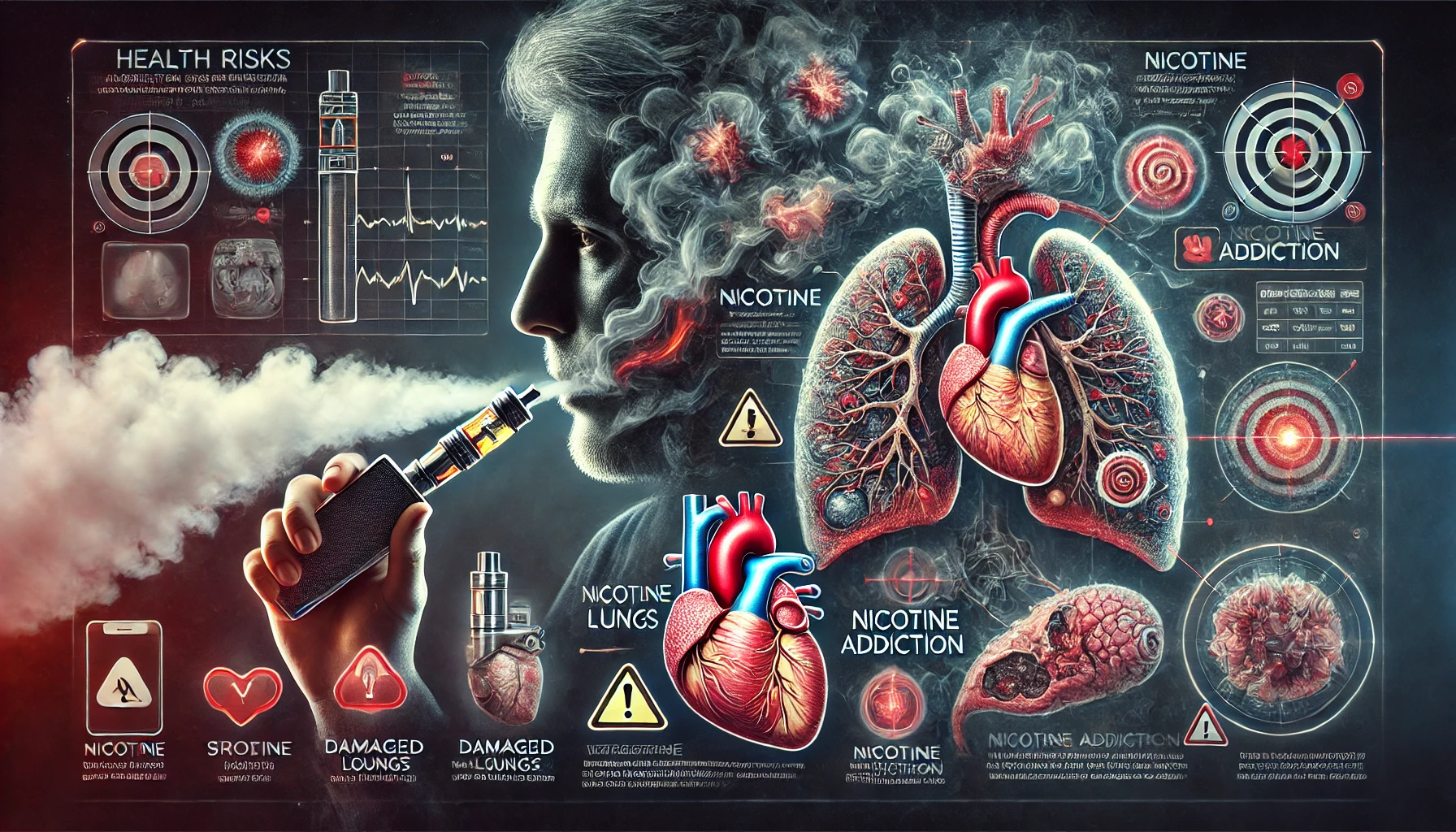The Hidden Health Risks of Vaping: What You Need to Know

Vaping has gained popularity over the past decade, but its health risks are often overlooked. Many view it as a “safer” alternative to smoking cigarettes, yet recent studies show that vaping poses serious health risks. This article explores the dangers associated with vaping, backed by science.
1. What is Vaping?
Vaping involves inhaling vapor produced by an electronic device (e-cigarette) that heats a liquid (vape juice). This liquid often contains nicotine, flavorings, and other chemicals.
2. Why Vaping is Not a Safe Alternative to Smoking
Though marketed as a safer choice, vaping still exposes users to harmful chemicals. Nicotine addiction, lung damage, and increased risk of heart disease are among the major health concerns.
3. The Impact on Lungs and Respiratory Health
Vaping can lead to lung inflammation, chronic bronchitis, and even severe conditions like “popcorn lung” and EVALI (e-cigarette or vaping product use-associated lung injury). The chemicals in vape products irritate the lungs, compromising respiratory health.
4. Vaping and Heart Health
Vaping is linked to higher risks of heart attacks and strokes. Nicotine, in particular, increases heart rate and blood pressure, stressing the cardiovascular system.
5. The Unknown Long-Term Effects of Vaping
Unlike traditional smoking, which has been studied for decades, vaping is relatively new. This means that the long-term effects are still largely unknown, but initial research suggests serious risks, including cancer and organ damage.
6. The Dangers of Vaping for Teens
Vaping is especially harmful to teenagers. Adolescents who vape are more likely to become addicted to nicotine, which can affect brain development. Studies also suggest that vaping may be a gateway to smoking traditional cigarettes.
7. The Growing Concern Over THC and Vitamin E Acetate
Many vape-related lung injuries have been tied to products containing THC and Vitamin E acetate. These substances can severely damage the lungs and have been linked to numerous hospitalizations and deaths.
8. How to Quit Vaping: Steps to Protect Your Health
Quitting vaping can be challenging, but it’s crucial for long-term health. Seek support from friends, family, or healthcare providers. There are also resources like apps, counseling, and nicotine replacement therapies available to help you stop.
Conclusion
While vaping may seem like a harmless habit, the health risks are real and significant. From lung and heart issues to the potential for unknown long-term effects, vaping poses a serious threat to your well-being. If you or a loved one is vaping, it’s time to reconsider the dangers and take steps to quit.


